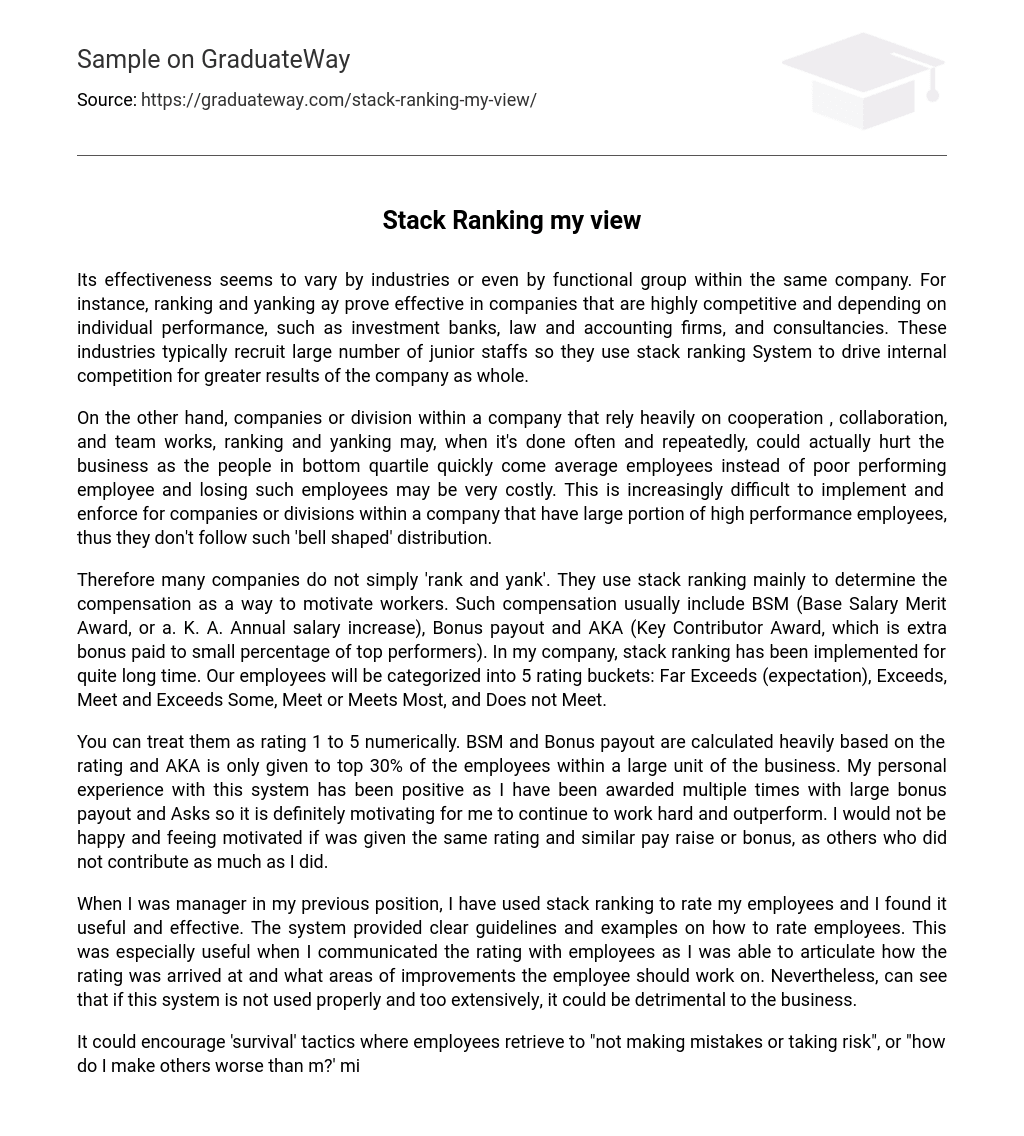Its effectiveness seems to vary by industries or even by functional group within the same company. For instance, ranking and yanking ay prove effective in companies that are highly competitive and depending on individual performance, such as investment banks, law and accounting firms, and consultancies. These industries typically recruit large number of junior staffs so they use stack ranking System to drive internal competition for greater results of the company as whole.
On the other hand, companies or division within a company that rely heavily on cooperation , collaboration, and team works, ranking and yanking may, when it’s done often and repeatedly, could actually hurt the business as the people in bottom quartile quickly come average employees instead of poor performing employee and losing such employees may be very costly. This is increasingly difficult to implement and enforce for companies or divisions within a company that have large portion of high performance employees, thus they don’t follow such ‘bell shaped’ distribution.
Therefore many companies do not simply ‘rank and yank’. They use stack ranking mainly to determine the compensation as a way to motivate workers. Such compensation usually include BSM (Base Salary Merit Award, or a. K. A. Annual salary increase), Bonus payout and AKA (Key Contributor Award, which is extra bonus paid to small percentage of top performers). In my company, stack ranking has been implemented for quite long time. Our employees will be categorized into 5 rating buckets: Far Exceeds (expectation), Exceeds, Meet and Exceeds Some, Meet or Meets Most, and Does not Meet.
You can treat them as rating 1 to 5 numerically. BSM and Bonus payout are calculated heavily based on the rating and AKA is only given to top 30% of the employees within a large unit of the business. My personal experience with this system has been positive as I have been awarded multiple times with large bonus payout and Asks so it is definitely motivating for me to continue to work hard and outperform. I would not be happy and feeing motivated if was given the same rating and similar pay raise or bonus, as others who did not contribute as much as I did.
When I was manager in my previous position, I have used stack ranking to rate my employees and I found it useful and effective. The system provided clear guidelines and examples on how to rate employees. This was especially useful when I communicated the rating with employees as I was able to articulate how the rating was arrived at and what areas of improvements the employee should work on. Nevertheless, can see that if this system is not used properly and too extensively, it could be detrimental to the business.
It could encourage ‘survival’ tactics where employees retrieve to “not making mistakes or taking risk”, or “how do I make others worse than m?’ mindset. It could also lead to employee focusing on ‘building relationship” with managers instead of focusing more on getting the job done. If that becomes epidemic and widespread within a business unit or the organization, it would lead to ever impact on productivity and overall performance of the whole organization.
There is also always human factor involved as the rating is done by manager and objectiveness is not always fulfilled. I read that most companies that have been using this system have shifted to more flexible systems where employees are still rated or ranked, but not along a bell curve or with strict cutoffs. There is more focus on consistent feedback on how people can improve (which happens to be true for my company, that I find very useful and productive).
The recent news on Microsoft terminating the view system is a proof that corporations are becoming more aware of the potential downside of the stack ranking system and are taking initiatives to minimize the shortcomings. In summary, I think the stacking ranking system is more appropriate for certain industries than others and its implementation should also be flexible based on type of work on the business units. When implemented properly, Stack Ranking system can be an effective way to motivate employees and should have positive effect on overall company productivity and performance.





